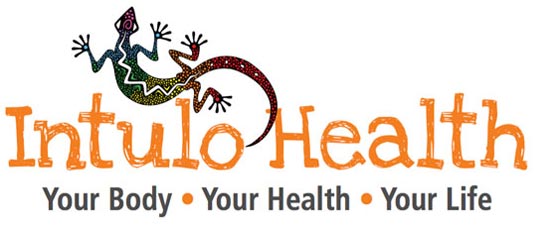How Bad Posture Affects Breathing
This month I thought I’d write about a subject that is close to my heart. My mother suffers with intercostal neuralgia, which means inflammation of the intercostal muscles (the muscles in between the ribs). Listening to my mother’s aches and pains I realised that they were similar to most of my clients, difference being .. most of my clients suffer with bad posture! I know that I harp on about bad posture, but this month I thought I’d explain in simple terms how “bad posture” effects your breathing which then brings on all sorts of aches and pains and eventually illness.
There are three primary muscle groups involved in breathing. They are the intercostal muscles of the thoracic ribcage, the abdominal muscles (Obliques, Transverse Abdominus, Rectus Abdominus) and the diaphragm. (The diaphragm is shaped like a parachute and lies under the ribcage). Most people in the UK are stressed out, have a poor diet with little nutrients, and don't get enough exercise. Not only does this leave them weak, but the muscles of respiration become shortened and pull on the bone structure. Diaphragmatic breathing involves the downward motion on the inhalation and up on exhalation. The taut abdominal muscles also lift up and in with exhalation helping to push the diaphragm against the lungs and expansion of the lower ribcage (intercostal muscles) on the inhalation helps stretch the outer edges of the diaphragm to create more space for the lungs to fill. This breath stimulates the parasympathetic nervous system (calming & cooling to the body) creating mental clarity and attentiveness.
 Look at the picture to the right and visualise this... You’re sat in your chair behind your computer and you’re NOT sitting upright. In this “slumped” position the ribcage and sternum are pressing down against the diaphragm and the abdominals are effectively “shortening”. Now the body has to start working hard to breathe properly. This effectively weakens all of the abovementioned muscles because they’re overworking. If you suffer with asthma or any other illness’s which may weaken the “breathing” muscles, the body’s already at a disadvantage, so it has to work even harder whilst you’re sat in your bad posture. You’re not going to stop breathing as a result of bad posture, your body is to clever for that. The body naturally starts recruiting other muscles to help with the breathing process, namely the neck muscles. You’ll notice from the diagram (not the diaphragm) ;) .. that some of the neck muscles attach onto the ribs and the lungs are directly underneath your ribs. If you’re not using your breathing muscles effectively then the neck muscles start doing all the work. Over time the neck muscles are overworked which then precipitates neck pain, shoulder pain, headaches, migraines etc..
Look at the picture to the right and visualise this... You’re sat in your chair behind your computer and you’re NOT sitting upright. In this “slumped” position the ribcage and sternum are pressing down against the diaphragm and the abdominals are effectively “shortening”. Now the body has to start working hard to breathe properly. This effectively weakens all of the abovementioned muscles because they’re overworking. If you suffer with asthma or any other illness’s which may weaken the “breathing” muscles, the body’s already at a disadvantage, so it has to work even harder whilst you’re sat in your bad posture. You’re not going to stop breathing as a result of bad posture, your body is to clever for that. The body naturally starts recruiting other muscles to help with the breathing process, namely the neck muscles. You’ll notice from the diagram (not the diaphragm) ;) .. that some of the neck muscles attach onto the ribs and the lungs are directly underneath your ribs. If you’re not using your breathing muscles effectively then the neck muscles start doing all the work. Over time the neck muscles are overworked which then precipitates neck pain, shoulder pain, headaches, migraines etc..
It’s important to do core strength exercises to strengthen up the breathing muscles ... HOWEVER, the body requires balance. Doing hundreds of stomach crunches everyday is going to restrict your breathing. The abs attach from the sternum (breast plate) and insert onto the pubic bone. If the abs are shortening as a result of hundreds of crunches then that too is going to restrict the breathing in exactly the same way as the bad posture does. Over doing core work is going to do the same thing. Ever noticed how loads of body builders have gigantic neck muscles! Imagine the migraines they get! Get the picture?
One more analogy.. If you put a glass dome over a plant it would affect it’s breathing, irrespective of whether you were watering it, the leaves would eventually droop due to lack of oxygen. Eventually the plant withers even more, the leaves go brown or die and then fall off.. Same thing happens to our bodies. Lack of oxygen affects our muscles, blood circulation, organs and overall wellbeing and our bodies become stressed in a fight and flight sort of way! Then we get sick...
Deep tissue massage can tone and stretch the diaphragm with pressure point work, breathing exercises are essential and various cardiovascular workouts can do the same, however, moving straight into cardiovascular work without addressing the underlying issue is an inefficient approach.
Now sit up straight, take a deep breath and give your body what it really needs ..... OXYGEN!!!
If you think this article applies to you then please do not hesitate to contact Amanda on 07789 810752 ... For a FREE 20 minute assessment
Remember to 'like' our facebook page as well to keep up to date with all of our latest news!
Written by Bournemouth based remedial massage therapist Amanda Burger


